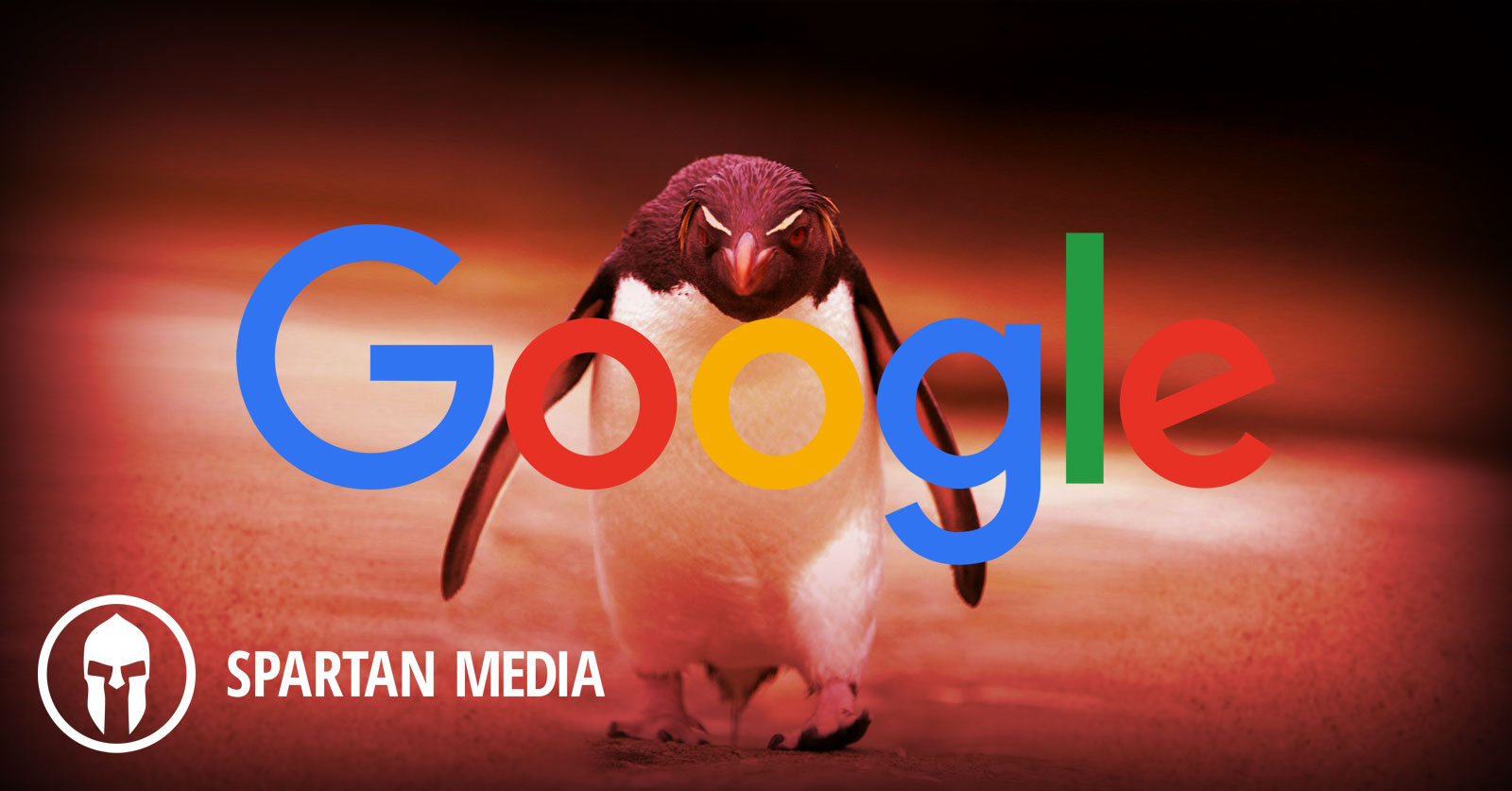During a recent interview on Webcology, I was discussing Google’s recent Penguin 4.0 update with Jim Hedger and Dave Davies, but after the interview, the wheels in the cynical part of my brain really started turning.
After nearly two years of waiting, Google has finally updated Penguin—this time for the last time, because now it’s been rolled into their core search algorithm. The implication is that this round of improvements has perfected Penguin.
One of the most notable improvements is that it’s now reported to be more granular, so rather than penalizing an entire website for violations of Google’s Webmaster Guidelines, specific pages or even sections of a site can be penalized while the rest remain unaffected. Think of it like sending in a sniper instead of calling an air strike.
This proves what professionals in the search engine optimization industry have been saying since 2012, when Penguin 1.0 first appeared. That it was a horribly broken update that hurt lots of innocent business owners and was easily manipulated by unethical SEOs to harm their competitors.
Despite Matt Cutts’s claim that negative SEO is nearly impossible and extremely rare, SEO professionals who aren’t spokespeople for Google know and are willing to admit otherwise.
Check out the comments section on this post by Moz’s Rand Fishkin and you can clearly see that most experienced SEO professionals agree that negative SEO is both easy and common based on plenty of real-world experience.
Google desperately needed people to believe that Penguin wasn’t flawed for two reasons.
- They needed to hide how flawed and easily manipulated their algorithm was. (Both for good and for evil.)
- They needed to scare marketers away from link building activities intended to manipulate organic ranking.
Why were people afraid of link building in the first place?
Google came out like a wrecking ball when they first released Penguin in 2012, both to destroy websites that had already engaged in link building, and to scare the shit out of anyone considering it.

Not surprisingly, a growing number of marketers have become increasingly scared of link building, and those fears, while wrong, were understandable. After all, the last update was on December 2014—over 700 days ago, which means any sites penalized in the last update have waited nearly two years to recover. That’s a pretty understandable reason to play it ultra-safe.
While some websites were legitimately penalized for blatant spam, particularly link spam, a tremendous number of innocent websites became collateral damage, completely destroying thousands of small businesses.
That’s a pretty big motivator to avoid link building like the plague.
Today, you see a lot of intelligent people mistakenly preaching the “just build great content and people will naturally link to it” mantra, largely because Google’s spokespeople explicitly tell marketers not to build links.
You also see a lot of people in the search engine optimization industry proudly standing on their soapbox, hypocritically making that claim while their actions indicate that they know it’s all bullshit. I know this because I see the mountain of emails they send to the websites we own or manage asking for links.
What’s different now?
Remember the granularity of this update that we talked about earlier? The fact that low-quality links will either be ignored, or will just trigger a page or section-specific penalty instead of a site-wide penalty?
Because of that, there’s not much downside to aggressive link building for search marketers who really know what they’re doing.
Most business owners who aren’t elbow-deep in the trenches of search engine optimization on a daily basis have probably already been scared off off link building. Sure, they might ask for a link here and there among friends, but they sure as hell aren’t engaging in any outreach.
But you know who will? Everyone who isn’t already on the first page of Google. Every brand new business owner who hasn’t even heard of the monster we once called Penguin. And search marketers who had previously suffered it’s wrath but now realize it’s been neutered.
Why? Because they have virtually nothing to lose. It’s a classic case of risk vs. reward for many people.
They’re already missing out on visitors to their competitors, and even if they violate Google’s Webmaster Guidelines on an epic scale, only the violating pages or sections will be penalized.
Now I will point out that to use the old link building techniques that violate Google’s guidelines, you would have to be a search engine optimization expert. A real one, not the kind who read a few blog posts, answered a few questions on forums, and anointed yourself with the title. Make one mistake, and you’re most important pages, or even your entire website can be destroyed forever.
Mark my words, over the next 12 months, we’re going to see a resurgence in the grey and black hat link building tactics that dominated the pre-Penguin days, and they will work for marketers who understated how to game the system. Within a year, we’ll start to see the mainstream marketers jump back on spammy links with a rabid enthusiasm, and many of them will destroy their websites in the process.
And then we’ll go through this dance all over again.

